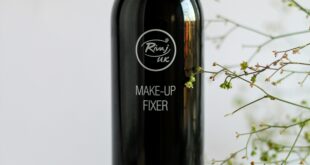In a recent poll, 9 out of 10 Allure editors agreed — beauty product claims can be pretty damn confusing. (And one person was out sick that day). Why all the linguistic gymnastics?
For starters, brands are incentivized to make their products sound like they work — just not work too well. “If a product claims to diagnose, cure, mitigate, treat, prevent disease. or affect the structure or function of the human body, then the Food and Drug Administration (FDA) considers it a drug,” explains cosmetic chemist Kelly Dobos. Cosmetics, on the other hand, can only make appearance claims.
“A lot of companies make very efficacious products but do not want to veer into the territory of [an expensive] new drug application with the FDA, so they come up with creative language,” says Dobos. If a product says it reduces wrinkles, that’s a drug. Reduces the appearance of wrinkles? That’s a cosmetic.
While the FDA monitors all drug claims, cosmetic claims are closely watched by the FTC and National Advertising Division of the Better Business Bureau, notes Dobos. If they — whether prompted by internal investigators, a competitor brand, or a consumer, like you — think a claim sounds too good to be true, they’ll ask to see the research. If the studies don’t exist or don’t hold up, they’ll do what any red-blooded American would do: get litigious.
Of course, this is just the tip of the proverbial beauty industry iceberg. We strapped on our goggles and took a deep dive into the world of claims, studying the studies behind the studies to sort cosmetic science from fiction. Here, what we learned.
Clinically Proven
If something says it’s clinically proven, it should have CVS-length receipts. “It basically means a study was conducted in a clinical setting, with objective measurements, under the supervision of a medical professional,” says Dobos. (As opposed to “Sharon R.’s” bathroom in Connecticut, under the supervision of a ring light.) That said, the term — like “natural” or “sustainable” — isn’t regulated, so you may want to conduct your own investigation and look up the study. It may be on the brand’s site or social media.
Generally, the more study participants in a study, the better, but look for at least 30, says Craig Weiss, president of Consumer Product Testing Company in New Jersey. This is the number that’s often required by retailers to make claims, he adds. Odds are if a brand’s product really is clinically proven, “they’ll make the information readily available in case they are called into question,” says Dobos.
https://www.allure.com/story/understanding-beauty-product-claims
 fashion rec fashion wanted
fashion rec fashion wanted

